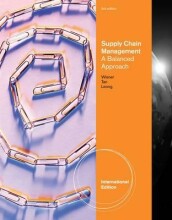Comparing Alternative system Configurations - Ranking and Selection
12 important questions on Comparing Alternative system Configurations - Ranking and Selection
How does the two-stage sampling from each of the k systems look like?
2), then use the resulting variance estimates to determine how many more replications from each system are necessary in a second stage of sampling in order to reach a decision.
(one policy is chosen as the best)
Why would we select a subset of size m containing best of k systems?
What is a problem with the smallest mean out of k systems?
- Higher grades + faster learning
- Never study anything twice
- 100% sure, 100% understanding
Optimal computing budget allocation multistage approach:
In the case of a steady-state parameter for a non-terminating simulation, unbiased independent observations do not come as easily. What are approaches to selection for steady-state parameters?
2. Make a single long run of system i and then let Xij be the sample mean of the observations in the jth batch within this run.
What is the tradeoff for specifying n0?
- If n0 too large, we could overshoot the necessary numbers of replications for some of the system, which is wasteful.
What is the goal of ranking and selection?
(in other words: Select the best of k systems with prescribed probability P∗ of
correct selection and with indifference amount (distance) d∗)
What is the correct selection (CS)
Alternative Ranking and selection goals and procedures are?
Select a subset of size m containing the best of k systems with prescribed probability P∗ of correct selection and with indifference amount (distance) d∗
– Similar procedure (Dudewicz and Dalal), other constants
– Less ambitious, requires less runs
– Apply in initial stage of study when k is large
(e.g more policies are chosen as best)
Select the m best of k systems (not ranked) with pre-scribed probability P∗ of correct selection and with indifference amount (distance) d∗
– Similar procedure (Dudewicz and Dalal), other constants
– More ambitious, requires more runs
What is the 2-stage procedure of Dudwicz and Dalal?
• Use variance estimates to compute sample size N_i for system i (constant depends on P∗, d∗, k, n_0)
•Final stage:N_i − n_0 additional runs for system i
• Compute weighted sample means of 2 stages (w_i)
• Select the best system
Which problems can occur by ranking and selection?
* Cororelation within an alternative
What do we mean as we define a system as the "best" system?
The question on the page originate from the summary of the following study material:
- A unique study and practice tool
- Never study anything twice again
- Get the grades you hope for
- 100% sure, 100% understanding































